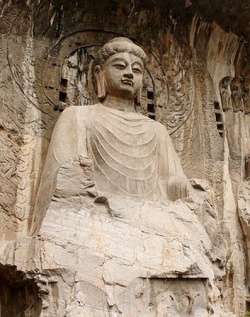Difference between revisions of "What Is the Twilight Language?"
| Line 1: | Line 1: | ||
[[File:Budd lickr.jpg|thumb|250px|]] | [[File:Budd lickr.jpg|thumb|250px|]] | ||
| − | The [[twilight language]] is an Eastern [[language]] involving words and phrases that can convey more than one meaning. The majority of descriptive [[conversation]] and {{Wiki|literature}} within the {{Wiki|dialect}} are conceptually {{Wiki|synonymous}} and refer to the same | + | The [[twilight language]] is an Eastern [[language]] involving words and phrases that can convey more than one meaning. The majority of descriptive [[conversation]] and {{Wiki|literature}} within the {{Wiki|dialect}} are conceptually {{Wiki|synonymous}} and refer to the same general [[phenomenon]], which is mostly [[esoteric]] in [[nature]]. This system of [[language]] is seen explicitly in [[Tantric Buddhism]] and [[Hinduism]], though the {{Wiki|dialect}} itself is [[thought]] to be rendered from [[Sanskrit]] {{Wiki|terminology}}. In addition to the {{Wiki|vocal}} aspect of the [[language]], [[twilight language]] becomes more complex to an initiate as he discovers that its {{Wiki|discourse}} includes nonverbal {{Wiki|communication}}, like gesturing, as well. |
The {{Wiki|confusion}} that stems from [[twilight language]] is intentional. Many [[esoteric]] [[traditions]] employ this modality, which uses opaque [[language]], {{Wiki|codes}}, and {{Wiki|conceptual}} {{Wiki|metaphor}}. It is [[thought]] that the most important teachings lie in the [[secret language]] of [[mudras]], which are usually gestures made by the hands that guide [[energy]] flow and modulate reflexes in the {{Wiki|brain}}. In addition, [[mantras]], which are phrases that are memorized and recited during [[meditation]], and [[mandalas]], which are seen be the initiate as a depiction of [[divine]] [[truth]] and [[reality]], are part of the [[symbolic]] [[nature]] of [[twilight language]]. | The {{Wiki|confusion}} that stems from [[twilight language]] is intentional. Many [[esoteric]] [[traditions]] employ this modality, which uses opaque [[language]], {{Wiki|codes}}, and {{Wiki|conceptual}} {{Wiki|metaphor}}. It is [[thought]] that the most important teachings lie in the [[secret language]] of [[mudras]], which are usually gestures made by the hands that guide [[energy]] flow and modulate reflexes in the {{Wiki|brain}}. In addition, [[mantras]], which are phrases that are memorized and recited during [[meditation]], and [[mandalas]], which are seen be the initiate as a depiction of [[divine]] [[truth]] and [[reality]], are part of the [[symbolic]] [[nature]] of [[twilight language]]. | ||
Latest revision as of 16:39, 20 March 2014
The twilight language is an Eastern language involving words and phrases that can convey more than one meaning. The majority of descriptive conversation and literature within the dialect are conceptually synonymous and refer to the same general phenomenon, which is mostly esoteric in nature. This system of language is seen explicitly in Tantric Buddhism and Hinduism, though the dialect itself is thought to be rendered from Sanskrit terminology. In addition to the vocal aspect of the language, twilight language becomes more complex to an initiate as he discovers that its discourse includes nonverbal communication, like gesturing, as well.
The confusion that stems from twilight language is intentional. Many esoteric traditions employ this modality, which uses opaque language, codes, and conceptual metaphor. It is thought that the most important teachings lie in the secret language of mudras, which are usually gestures made by the hands that guide energy flow and modulate reflexes in the brain. In addition, mantras, which are phrases that are memorized and recited during meditation, and mandalas, which are seen be the initiate as a depiction of divine truth and reality, are part of the symbolic nature of twilight language.
During initiation, meditation is a progressive process that employs the subtle energy body, expressed and felt by the meditator as movement of life energy through energy spaces called chakras. Contemplation of each chakra is thought to lead to a more complete understanding of the phenomenon that is referred to constantly within the esoteric texts that employ twilight language. The initiate is encouraged to move at a comfortable pace throughout the meditative process. According to Tantric philosophy, the energy moves upward throughout all the chakras and is finally released through the crown chakra. At this point, it is thought that the initiate may catch a glimpse of enlightenment and even acquire psychic powers, but this experience is often fleeting and even more intense practice is prescribed.
The twilight language phenomenon in the Buddhist tradition is thought by some to have been expressed to the masses by the bodhisattva Gotama. His followers claimed that their enlightened teacher held no knowledge from them; they trusted that his words were literal and all-encompassing. The Buddhists who were inspired by Gotama believed his teachings would lead them to nirvana, or enlightenment.
